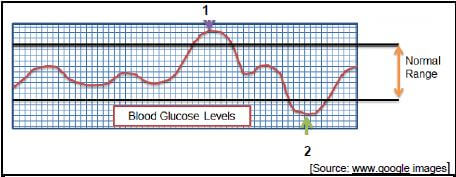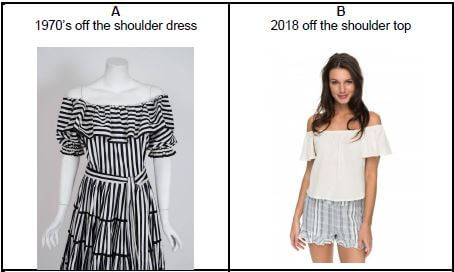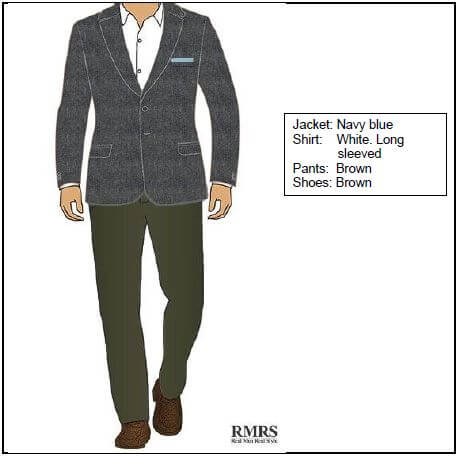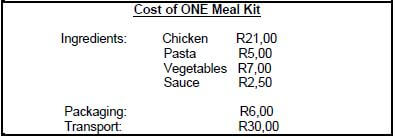Consumer Studies Grade 12 Questions - NSC Exams Past Papers and Memos September 2019 Preparatory Examinations
Share via Whatsapp Join our WhatsApp Group Join our Telegram GroupINSTRUCTIONS AND INFORMATION
- This question paper consists of SIX questions
SECTION
MARKS
TIME
(MINUTES)
QUESTION 1: Short questions (All topics)
40
20
QUESTION 2: The Consumer
20
20
QUESTION 3: Food and Nutrition
40
40
QUESTION 4: Clothing
20
20
QUESTION 5: Housing
40
40
QUESTION 6: Entrepreneurship
40
40
TOTAL:
200
180
- ALL the questions are COMPULSORY and must be answered in the ANSWER BOOK.
- Number the answers correctly according to the numbering system used in this question paper.
- Start each question on a NEW page.
- You may use a non-programmable calculator.
- Write in black or blue ink only.
- Pay attention to spelling and sentence construction.
- Write neatly and legibly.
QUESTIONS
QUESTION 1: SHORT QUESTIONS
1.1 Various options are provided as possible answers to the following questions. Choose the answer and write the letter (A–D) next to the question number (1.1.1–1.1.20) in the ANSWER BOOK, for example 1.1.21 D.
1.1.1 A money-back guarantee stipulates that …
- the seller will give the unsatisfied customer his/her money back after a specified number of days.
- the product will be repaired or replaced if it does not meet certain requirements.
- the customer pays a small monthly fee for an extended period of time.
- the customer gets his/her money back if a supplier influences them to do business with it. (1)
1.1.2 Provisional tax is …
- tax paid at the same time as income is earned.
- two payments made per year based on estimated taxable income.
- tax paid on the provision of goods and services.
- a single large sum paid at the end of the tax year. (1)
1.1.3 A pyramid scheme involves members who …
- are recruited to buy and sell products and receive commission for recruiting other members.
- pledge a fixed amount of money to a common fund on a regular basis.
- are unjustly treated by the supplier.
- are paid to recruit new members and promised a high return on their investment. (1)
1.1.4 The consumer price index (CPI) …
- is calculated on the principal (original) amount borrowed.
- measures the interest charged by the Reserve Bank.
- is an instrument used to calculate price increases and the inflation rate.
- is the rate at which prices fluctuate as the demand for money changes. (1)
1.1.5 Factor/factors that increase(s) the risk of osteoporosis:
- Low oestrogen levels
- Larger big-boned people
- Non-smokers
- A diet high in calcium (1)
1.1.6 Which of the following foods should be avoided by a person suffering from lactose intolerance?
- Sardines
- Brown bread
- Full fat ice cream
- Soya milk (1)
1.1.7 A person with high blood pressure is also at risk of developing …
- high blood glucose levels, Aids and kidney failure.
- stroke, osteoporosis and anorexia.
- heart attack, stroke and kidney failure.
- heart attack, anorexia and Aids. (1)
1.1.8 A stabiliser is added to instant pudding to …
- give it an even, smooth consistency.
- prevent the fat from becoming rancid.
- create a lighter colour.
- retard the growth of micro-organisms. (1)
1.1.9 Food irradiation is a technology that …
- uses agricultural methods to sustain the productivity of the eco system.
- introduces characteristics from one species to another.
- improves the safety of food and extends their shelf life.
- enables a country to be self-sufficient. (1)
1.1.10 Food security means that …
- South African farmers produce their own food.
- South African goods are sent for sale or exchange to other countries.
- people eat enough safe food for an active healthy life.
- everyone can afford to buy food. (1)
1.1.11 A fad/fads:
- What is currently popular and worn by the masses
- An expensive, outrageous style
- Lasts for many seasons
- Often seen in accessories (1)
1.1.12 An advantage of a well-planned wardrobe:
- It contains a variety of fashionable and colourful outfits
- Cheaper clothes are enhanced with expensive accessories
- There are many items that can be mixed and matched
- Many fad outfits are included (1)
1.1.13 The type of insurance that is taken out to cover the structure of a home:
- Life insurance
- Home owners’ insurance
- Bond protection insurance
- Household contents insurance (1)
1.1.14 The government offers a housing … for people of the lower-income group who qualify to obtain their own homes.
- subsidy
- collateral
- need
- delivery (1)
1.1.15 A term that refers to costs that buyers do not always take into account when purchasing a house:
- Deposit
- Hidden costs
- Bond costs
- Collateral security (1)
1.1.16 An advantage when interest is calculated according to a fixed rate on the bond repayment:
- You will not benefit when the interest rate drops
- The amount of interest you pay back may fluctuate
- If the interest rates rise, the monthly repayments will also go up
- You will not pay more when interest rates rise (1)
1.1.17 To lower the costs of finance charges for instalment sales transactions:
- Become the owner immediately.
- Use a credit card for payments.
- Know the interest rate.
- Pay off the goods as quickly as you can. (1)
1.1.18 The wages/salaries of workers are usually determined by their …
- skills and experience.
- experience and money available.
- age and working hours.
- attitude and work ethic. (1)
1.1.19 A document that shows the movement of money over a forecast period:
- Revenues
- Best sale scenario
- Cash-flow projection
- Feasibility study (1)
1.1.20 Objectives of advertising include:
- Establishing the costs of your product and communicating information
- Generating interest and choosing a product name
- Creating product awareness and maintaining sales
- Expanding your market and getting feedback from customers (1)
1.2 Choose the food-related disease from COLUMN B that matches the symptoms in COLUMN A. Write only the letter (A–H) next to the question number (1.2.1–1.2.5) in the ANSWER BOOK, for example 1.2.6 I.
COLUMN A | COLUMN B |
1.2.1 Excessive weight loss and thirst | A Skin allergy |
(5 x 1) (5)
1.3 Choose the term in COLUMN B that matches the description in COLUMN A. Write only the letters (A–F) next to the question number (1.3.1–1.3.3) in your ANSWER BOOK, for example 1.3.4 G.
| COLUMN A | COLUMN B |
1.3.1 When a contract is not valid or not legally binding |
|
(3 x 3) (3)
1.4 Identify THREE CORRECT statements from the list below for the requirements when applying for a home loan. Write only the letters (A–F) next to the question number (1.4) in the ANSWER BOOK.
- Certified copy of SA identity document or passport
- Proof of a housing subsidy
- Certified copy of your Curriculum Vitae
- Certified copy of the offer to purchase
- Letters from two references
- Income tax reference number (3 x 1) (3)
1.5 Identify FOUR CORRECT statements to retain quality during the storage of products in a business. Write only the letters (A–H) next to the question number (1.5) in the ANSWER BOOK.
- Do not overstock through incorrect purchasing
- Use the FIFO principle to ensure that older stock does not deteriorate
- Purchase quality raw materials
- Keep an accurate inventory of all stock
- Keep areas dry to prevent damage to stock
- Do not spend too much money on stock that could have been used more effectively elsewhere
- Keep products safe for clients
- Store frequently used goods as close to the door as possible (4 x 1) (4)
1.6 Choose the correct term/word in brackets. Write only the word/term next to the question number (1.6.1–1.6.5) in the ANSWER BOOK.
1.6.1 (Tuberculosis/Hepatitis) is a bacterial infection that spreads through the air.
1.6.2 (Gastro-enteritis/Dysentery) is a condition that causes inflammation of the stomach and intestines.
1.6.3 The (use by date/sell by date) is the latest date that a product can be sold to a consumer.
1.6.4 Anything that has been made from already existing materials, fabrics, metals or fibres is (reused/recycled).
1.6.5 Bamboo fabric is an example of a (renewable/non-renewable) textile. (5 x 1) (5) [40]
QUESTION 2: THE CONSUMER
2.1 Read the information and answer the questions that follow.
| The Consumer Protection Act states that a person who markets any goods that bear a trademark – but have been imported without the approval of the registered owner of the trademark – must put a notice in a visible place on the product clearly stating that the goods have been imported and explain the meaning of the notice to the consumer. |
2.1.1 What type of goods are referred to in the statement above? (1)
2.1.2 Give ONE advantage for a consumer buying this type of goods. (1)
2.1.3 Discuss the risks involved when a consumer purchases these types of products. (2)
2.2 Read the extract below and answer the questions that follow.
The Carbon Tax Bill was introduced by the Finance Minister, Tito Mboweni, in the National Assembly in October 2018 and is due to take effect from 1 June 2019. “SA intends to play a role in the world, as part of global efforts to reduce greenhouse gas emissions by up to 42% by 2025,” Mboweni said. “This will also be beneficial for all of South Africa and the health of individuals as there will be less pollution.” As for the drawbacks, it is another tax being added to an already struggling economy. It will create a further financial burden, as well as an administrative burden, as taxpayers will have to report to SARS. Secondly, as of 31 December 2022, the carbon tax will increase at the rate of inflation + 2%. [Adapted from Fin24, December 2017] |
2.2.1 Give ONE example of how consumers will benefit from carbon tax. (1)
2.2.2 What does SARS stand for? Write out in full. (1)
2.2.3 Name TWO other examples of indirect taxes that South African households have to pay. (2)
2.2.4 What is the effect of greenhouse gases on the environment? (2)
2.2.5 How does inflation affect the SA consumer? (4)
2.3 In our country, many communities resort to protests to air their grievances to their respective municipalities about a lack of service delivery. Discuss how a lack of the different basic services impacts on the community. (6) [20]
QUESTION 3: FOOD AND NUTRITION
3.1 Name TWO lifestyle behaviours that are a contributing cause to most of the food-related health conditions. (2)
3.2 Read the extract below and answer the questions that follow.
Iron-deficiency anaemia (IDA) is globally the most common nutritional deficiency. When iron stores become depleted, this can lead to anaemia. In a recent study of the iron status in a healthy SA adult population, the prevalence of iron deficiency was 39,8% in all participants and as high as 56,6% in women. Apart from inadequate dietary iron, anaemia can stem from excessive iron loss. Poor iron absorption can also be an issue. [Adapted from News24] |
3.2.1 Give ONE reason why iron-deficiency is higher in women. (1)
3.2.2 Iron amounts can be insufficient in the body due to a lack of iron rich foods in the diet. From the extract above, name TWO other causes of inadequate iron in the body and give an example of how this can occur for each one. (4)
3.2.3 Explain the role of iron in the blood. (3)
3.3 Give THREE similarities when considering the characteristics of the eating disorders, anorexia and bulimia. (3)
3.4 The aim in the management of persons who have anorexia and bulimia is for them to become physically and mentally healthy. Suggest THREE management strategies to assist them in their recovery. (3)
3.5 Study the graph below and answer the questions that follow. 
[Source: www.google images]
3.5.1 Use the correct terminology to label number 1 and 2 on the graph. (2)
3.5.2 Name the hormone responsible for ensuring that the glucose level stays within the normal range. (1)
3.5.3 Give TWO situations that would cause a drop in blood sugar levels in a normal situation (person who does not have diabetes). (2)
3.5.4 Discuss in detail how eating low GI foods would help to control the blood glucose levels so that they stay within the normal range. (5)
3.6 Read the statement below and answer the questions that follow.
| Food safety principles are for everyone, especially those living with HIV/Aids. People with Aids should take steps to prevent food-borne illnesses. Personal, kitchen and food hygiene practices must be followed to prevent contamination during food preparation. |
3.6.1 Explain why the above statement is true for people with Aids. (2)
3.6.2 State FOUR hygiene practices when working with food that would be applicable to prevent the spread of food-borne illnesses. (4)
3.7 Study the menu below, which is for one day and answer the questions that follow.
Breakfast: Muesli with skimmed milk and a banana, a glass of unsweetened orange juice |
3.7.1 The menu is suitable for a person with heart disease.
Analyse the types of fat present in the menu, their sources and discuss how the inclusion of this choice of fat would benefit a person with heart disease. (8) [40]
QUESTION 4: CLOTHING
4.1 Read the extract below and answer the questions that follow.
Eco-fashion is now perceived as a modern, rising trend. You can’t really tell the difference between ecologically-friendly fashion and traditional fashion pieces. The big difference is knowing that what you are wearing is manufactured by methods acceptable to mother nature. [Source: https://greenconduct.com/blog/what-is-eco-fashion/] |
4.1.1 Give a phrase to show your understanding of the word trend. (1)
4.1.2 Write a paragraph to indicate how people wearing eco-fashion can have an impact on protecting our environment. (4)
4.2 Explain the difference between imitation and counterfeiting, as these two terms are both forms of brand piracy. (2)
4.3 Study the pictures below and answer the questions that follow. 
4.3 1 Use the illustrations above to explain the term retrospective fashion. (2)
4.3.2 Give the name of the stage in the fashion life cycle when the top in picture B is worn by the masses. (1)
4.3.3 Give the name of the fashion when the top in picture B will last 2–3 years in the fashion life cycle. (1)
4.4 How would a fashion trend worn by a celebrity affect fashion change? (3)
4.5 Evaluate the suitability of the outfit below for professional workwear.  (6)
(6)
[20]
QUESTION 5: HOUSING
5.1 Read the advertisements on accommodation options below and answer the questions that follow.
| 1. Apartment to rent | 2. Apartment to buy | 3. Townhouse to buy |
One bedroomed Neat and spacious
Rental R7 000 per month 2 months’ deposit | Sectional title
R1 150 000,00 | Full title
R1 450 000,00 |
5.1.1 What is meant by the term full title used in the advertisement for the townhouse in option 3? (2)
5.1.2 In the first advertisement, name the contract and the two parties that are required to sign an agreement to rent the apartment. (3)
5.1.3 Name TWO instances where one could lose the deposit paid when the premises in option 1 are vacated. (2)
5.1.4 Discuss the different financial responsibilities for a person renting option 1 as opposed to the people buying the apartment in option 2 with regards to the pool facility. (4)
5.1.5 Give FOUR advantages of buying the townhouse in option 3, rather than buying a similar house that is not situated in a complex. (4)
5.1.6 Why are there no transfer fees or transfer duty in the advertisement for option 3? (2)
5.1.7 Compare the difference between transfer fee and transfer duty under the following headings. Tabulate your answer as follows:
Transfer fees | Transfer duty | |
The main difference | (1) | (1) |
Who finally receives the fee | (1) | (1) |
What the fee amount is based on | (1) | (1) |
(6)
5.1.8 Give the new name that each of these documents are given once a sale of a property is finalised and the house is in the new owner’s name:
- Offer to purchase (1)
- Deed of transfer (1)
5.2 Read the case study and answer the questions that follow.
Billy and Nelly want to buy a new microwave. The space available for a microwave in their kitchen is 35,6 x 61 x 50,8 cm (HWD). They want to use the microwave to defrost food from the freezer, reheat food and do some cooking. The maximum amount they are prepared to spend is R1 200,00. They plan to look at four different retailers and different brands. They read online that the advantage of a microwave with a turntable is that you do not have to stop the microwave and turn the dish while cooking. A 1 000-watt microwave with an automatic defrost and pre-programmed setting would be preferable. They would like the seller to assure them of a return policy and plan to study the warranty. |
5.2.1 Name THREE factors to consider before purchasing the microwave. (3)
5.2.2 Identify the universal design features referred to in the case study. (2)
5.2.3 What type of energy consumption would ‘saving time’ be categorised as? (1)
5.2.4 Identify the features that will save them time and give an explanation of how each feature will accomplish this. (6)
5.2.5 Name THREE responsibilities that Billy and Nelly carried out before purchasing the microwave. (3) [40]
QUESTION 6: ENTREPRENEURSHIP
6.1 Read the scenario below and answer the questions that follow.
THE MEAL KIT GAME IS ON Thandi did Consumer Studies at school. When doing practical lessons at school, her teacher always said that she was very creative. After school, when completing a short computer course on Business Management, she discovered South Africa’s four online meal delivery kit services. She decided she would start an online business from home to sell meal kits. She realised that people are too busy and tired from work to think of meals when they get home. She did a SWOT analysis to assess this business opportunity. She made two different meal samples for her friends to try and they loved the unique flavours. She would buy the ingredients locally, measure them out and put them in a box to be delivered to people’s homes. She noted that two local supermarkets sold this ready-to-go meal option. She tried some of them and knew that she could make her meal kits more appealing. She named her business ‘Quikstix’. She found a supplier that could buy boxes that were made from 100% recyclable material and the box contents would be contained in minimal plastic. The size of her box would be able to hold ingredients for four servings She had saved money for the initial outlay of her business from waitressing at the local coffee shop on weekends. She started her meal kit business with three options: a chicken pasta, a beef curry and a bean-and-vegetable stir fry for those customers who are vegan and follow a plant-based diet. On her Facebook page, she described her meal kits as time saving, wholesome delicious meals. She claimed ‘Quikstix’ offered convenience and a chance for customers to try new ingredients and flavours. [Own text] |
[A meal kit is a service that sends customers the recipe and ingredients needed to make a homemade meal. Fresh ingredients are included in the box/packaging.]
6.1.1 Select examples from the scenario to show that Thandi considered the following areas to check if her business idea had the potential to be successful:
- Testing the business concept (1)
- Having start-up capital (1)
- The location (1)
6.1.2 Explain what Thandi researched to ensure that her business would have a competitive edge over other competitors. (2)
6.1.3 Identify TWO strengths that Thandi could list for her SWOT analysis. (2)
6.1.4 Discuss how Thandi considered the following TWO factors when making her choice for a suitable product:
- Available raw materials (2)
- Consumer appeal (6)
6.1.5 How does her business name ‘Quikstix’ suit the concept of meal kits? (2)
6.1.6 Give TWO other requirements for good packaging for this product not mentioned in this scenario. (2)
6.1.7 Suggest ways how Thandi can use her time more efficiently on her production line when preparing and packaging her meal kits. (4)
6.1.8 Use the information below for the calculation questions. 
- Calculate the production cost for ONE meal kit. (1)
- Calculate the selling price of the meal kit if she added 65% mark-up. Show ALL calculations and round off the answer to the nearest rand. (3)
- Calculate the profit she will make if she reaches her sales target of selling 120 meal kits per month. Show ALL calculations. (2)
6.1.9 Create a product specification for the meal kit. Use appropriate information from the case study. Incorporate into your answer the ingredients that are provided in separate packets. (4)
6.1.10 The principle of sustainable consumption is not only the responsibility of the producer, but also the consumer. Assess how a consumer buying Thandi’s meal kit demonstrates responsible consumption to protect the environment. (7)
[40]
TOTAL: 200